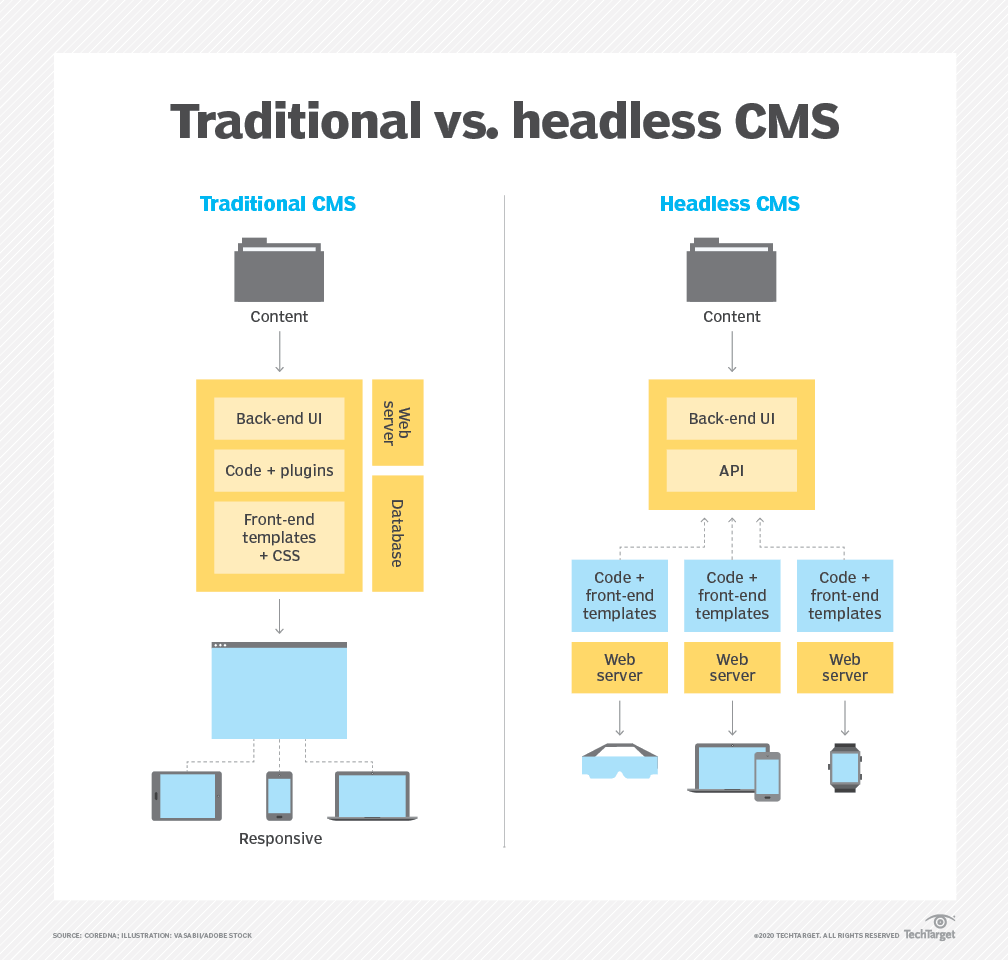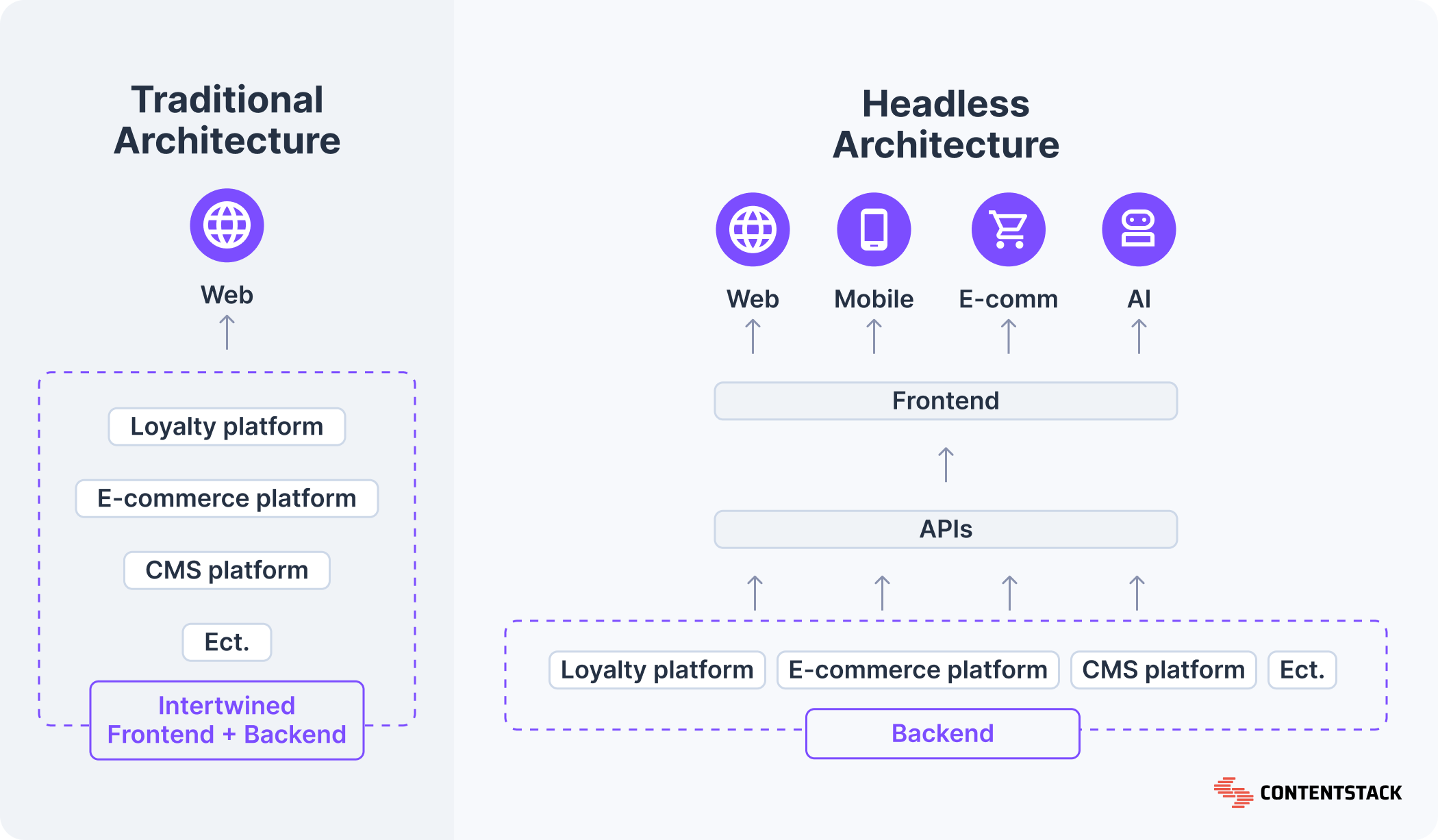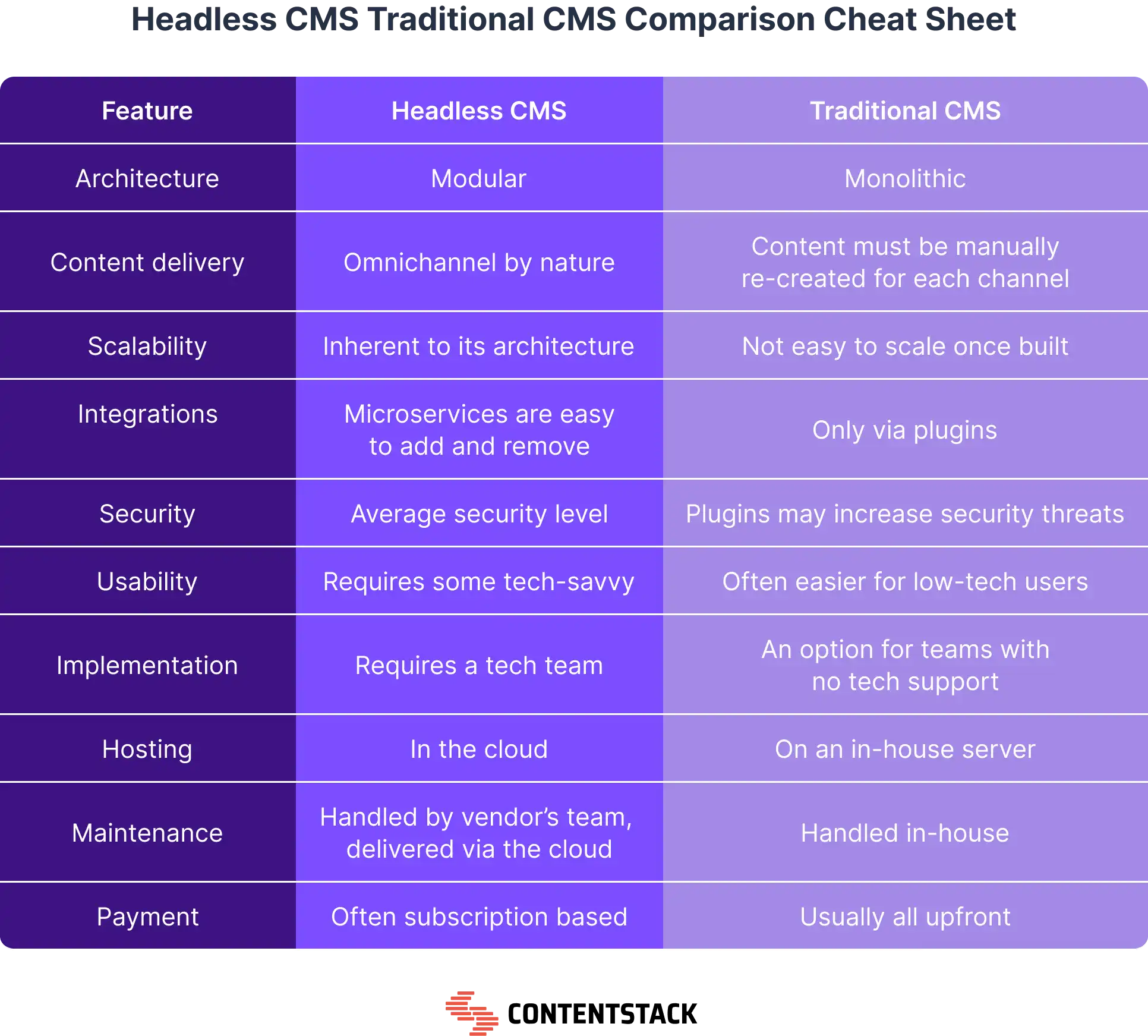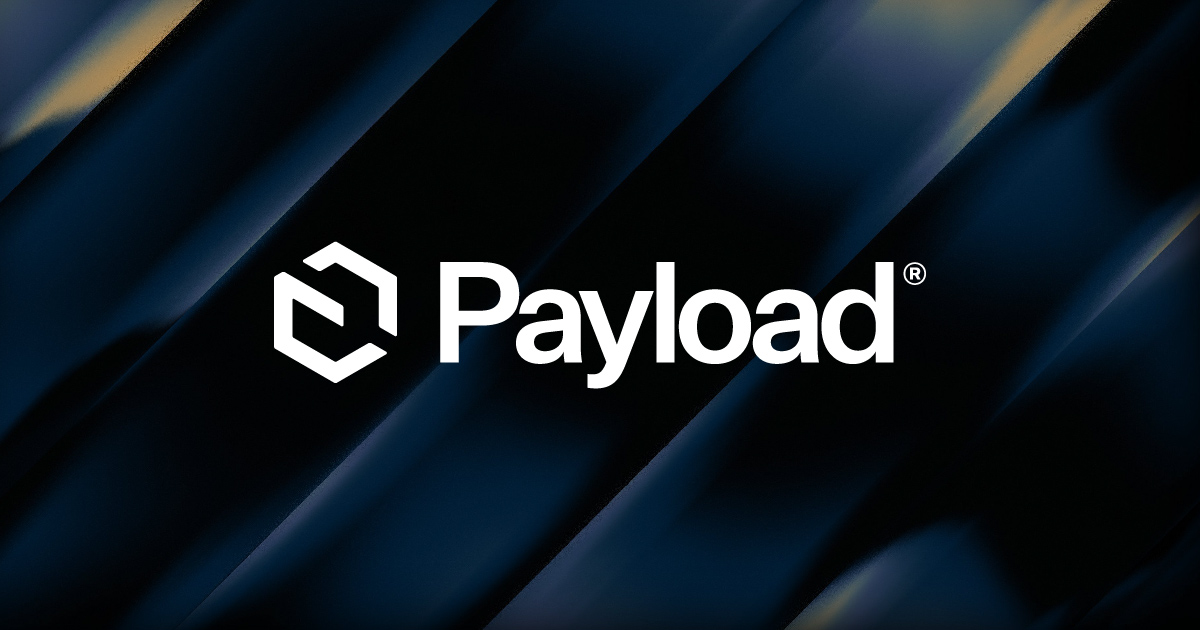Headless CMS
(2025-09-16T10:39.775Z)
Perplexity Query
(2025-09-16T10:39
.775Z)
Question:
Write a comprehensive one-page article about "Headless CMS".
A Headless CMS (Content Management System) is a backend-only CMS that separates content storage and management from its presentation layer, delivering content via APIs. This architecture is increasingly significant as organizations strive to provide consistent experiences across a growing number of digital channels and devices. By enabling flexible content delivery and integration, headless CMS platforms are transforming how businesses approach content management in a multi-platform world.
[uuf0xa]
[pfw22n]
[w4ibm0]

Main Content
A headless CMS is distinct from traditional, “Monolithic” CMS platforms by decoupling the backend (where content is created and stored) from the frontend (how content is displayed). In traditional systems, the backend and frontend are tightly linked, meaning content is often locked into a specific website or app format. In contrast, a headless CMS manages all content in a central repository and exposes it via APIs, allowing developers to deliver the same content across web, mobile, IoT, digital signage, and more.
[w4ibm0]
Practical examples illustrate the value of this approach:
- Omnichannel Content Delivery: A retail brand can update product descriptions once in the CMS, automatically pushing changes to its website, mobile app, digital kiosks, and even voice assistants, without duplicate effort. [uuf0xa]
- Enterprise Scalability: Media organizations can serve breaking news rapidly and uniformly across apps, sites, and partner feeds, leveraging the scalability and performance of API-based content distribution. [pfw22n]
Benefits of headless CMS platforms include:
- Streamlined Workflows: Content teams manage and update content in one place, maintaining consistency and saving time. [uuf0xa]
- Seamless Integrations: Businesses can connect with third-party tools—such as analytics, personalization engines, or ecommerce systems—via APIs. [uuf0xa]
- Enhanced Security: Decoupling the presentation layer reduces exposure to certain vulnerabilities. [w4ibm0]
However, there are challenges and considerations. Successful implementation typically requires more development resources, as organizations must build and maintain custom frontends. Content previewing and workflow can also be trickier, and marketers may face a steeper learning curve compared to traditional WYSIWYG (“what you see is what you get”) systems.
[w4ibm0]

Current State and Trends
Headless CMS solutions are gaining rapid adoption, especially among enterprises aiming to future-proof their content strategies. Key players include Contentful, Contentstack, Sanity, Strapi, and Prismic, alongside offerings from larger vendors like Adobe and Kentico.
[d3pobs]
Modern headless CMSs now offer low-code or no-code interfaces for non-developers, deeper integration with AI-driven personalization tools, and enhanced localization for global content management.
[pfw22n]
[w4ibm0]
Recent trends indicate a shift toward "hybrid" or "composable" CMS solutions that combine headless flexibility with some of the ease-of-use features found in traditional platforms, further lowering barriers for content teams and marketers. Cloud-based infrastructure and SaaS delivery are standard, promoting scalability and ease of deployment.
[w4ibm0]

Future Outlook
The future of headless CMS lies in deeper integration with emerging technologies (AI-driven content, real-time personalization, multi-language automation) and broader support for new digital experiences such as augmented reality, voice interfaces, and smart devices. As the need for seamless omnichannel delivery grows, headless approaches will likely become the standard for organizations seeking agility, scalability, and innovation in content management.
[pfw22n]
Conclusion
A headless CMS empowers organizations to deliver flexible, scalable, and consistent content across today’s multi-platform digital landscape. With continued innovation and adoption, headless content management will play a central role in shaping the future of digital experiences.
Citations
[uuf0xa] 2025, Sep 16. 13 Benefits of a Headless CMS for Your Website - Webstacks. Published: 2025-02-07 | Updated: 2025-09-16
[pfw22n] 2025, Sep 16. Benefits of headless CMS you can't ignore for growth | Contentstack. Published: 2024-12-09 | Updated: 2025-09-16
[w4ibm0] 2025, Jul 30. What Is Headless CMS? Definition, Benefits, Key Features. Published: 2025-08-12 | Updated: 2025-07-30
[d3pobs] 2025, Sep 14. A brief overview of headless CMS - Adobe for Business. Published: 2023-11-08 | Updated: 2025-09-14
[5]: 2025, Sep 16. What is Headless CMS? Definition & Benefits. Published: 2024-11-07 | Updated: 2025-09-16
[6]: 2025, Sep 16. Headless CMS explained in one minute - Contentful. Published: 2024-05-02 | Updated: 2025-09-16
[7]: 2025, Sep 16. Headless CMS 101: The Only Guide You'll Ever Need | Sanity. Published: 2025-08-18 | Updated: 2025-09-16
[8]: 2025, Sep 16. Headless CMS: Pros and cons you need to know - Brightspot. Published: 2025-02-07 | Updated: 2025-09-16
[9]: 2025, Sep 15. Benefits of Headless CMS: 7 Reasons to Go Headless - Liferay DXP. Published: 2023-10-27 | Updated: 2025-09-15




